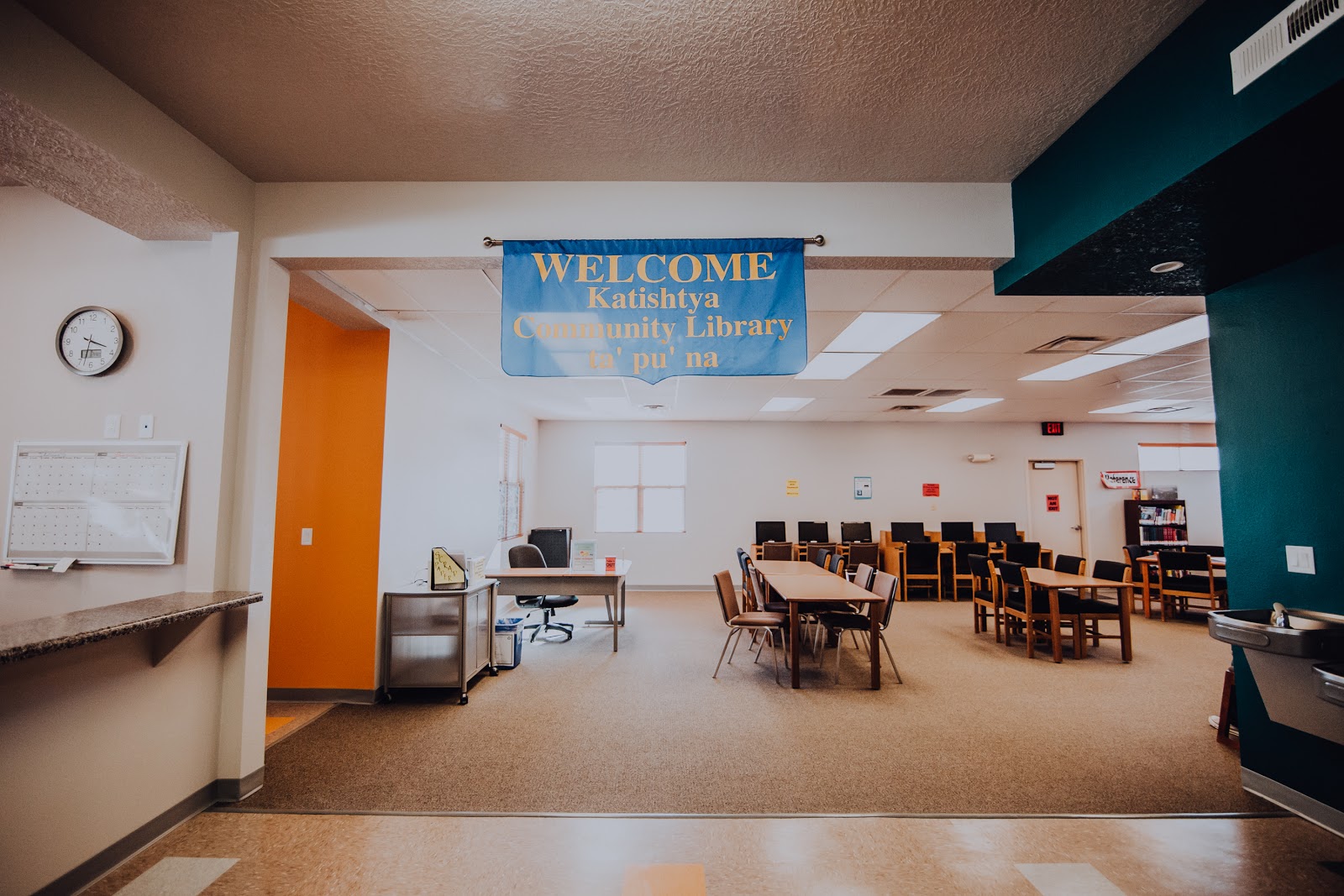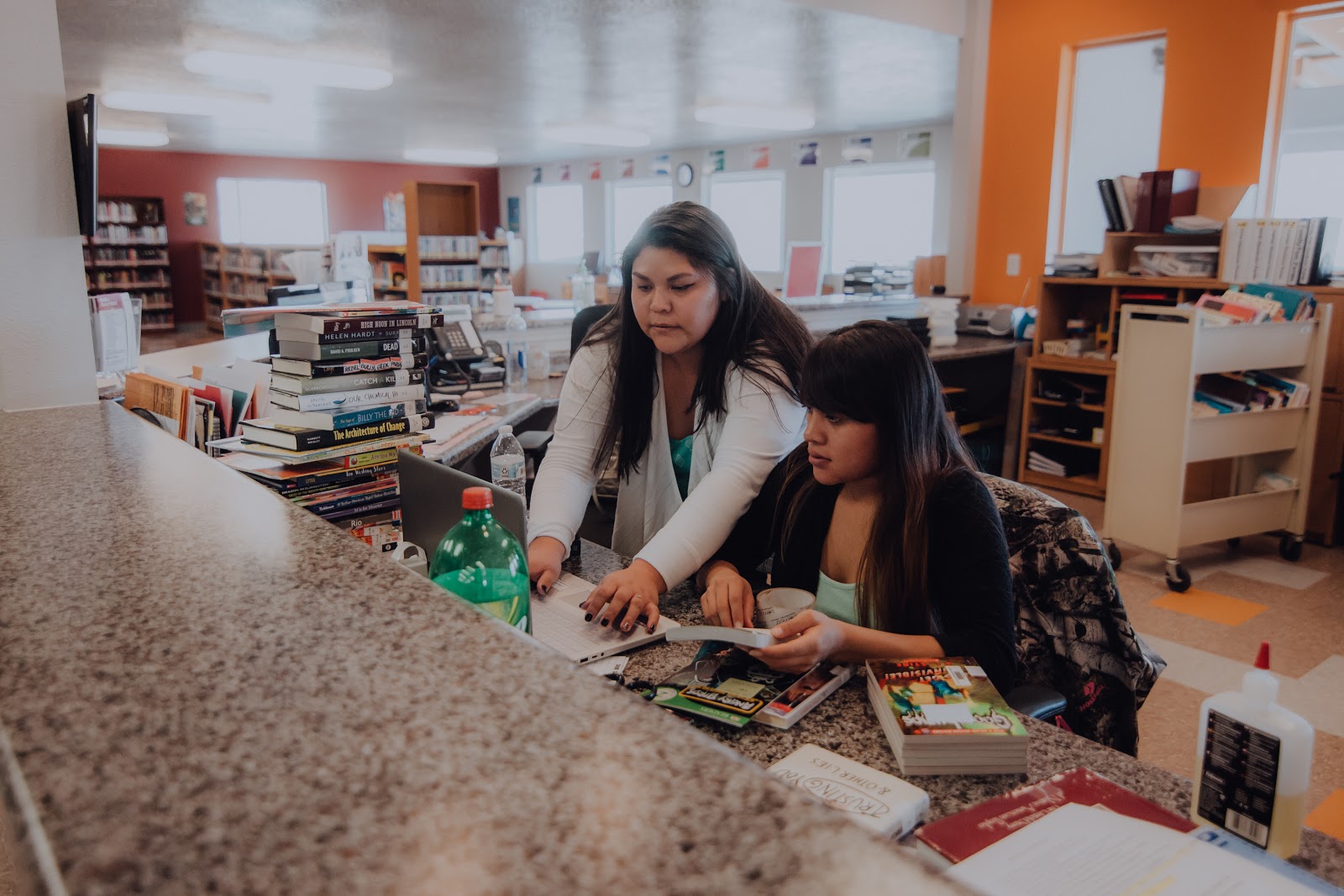By Megan Aguilar / NM News Port

As winds whip the San Felipe Pueblo, it’s quiet in the community’s main library. Then whispers of frustration begin to build. They come from the computer area, as “server not found” warnings pop up on computer screens. The internet is down again.
“I go over data every month because sometimes it’s the only thing that works,” said community member Eugene Calavaza as he resorts to scrolling web pages on his phone.
The Katishtya Library, the only library in the Pueblo of San Felipe, relies on a Digital Subscriber Line connection that is shared with all other tribal departments in the pueblo.
That means that during high traffic times, the internet connection can slow to a crawl; but help is on the way.
The Middle Rio Grande Pueblo Consortium, comprised of the pueblos of San Felipe, Santa Ana, Cochiti and Santo Domingo, has began construction on a 60 mile long fiber optics installation that will bring better broadband connection to pueblo libraries.
In a 2016 Broadband Progress Report, the Federal Communications Commission (FCC) reported that 41 percent of Americans living on tribal lands lack access to the standard 25 megabytes per-second broadband connection. That is approximately 1.6 million people without secure internet service.
According to BroadBandNow, 80 percent of New Mexicans have access to broadband coverage but there are still 402 thousand people without access to wired connections that meet the 25 mbps standard. There is also an additional 150 thousand people that don’t have access to any internet providers in their community.
Alissa Chavez-Lowe, the Education Director for the pueblo of San Felipe has seen first hand how the community struggles with slow internet. “We used to have classes with SIPI (Southwestern Indian Polytechnic Institute) and then they upgraded their systems and we no longer could do it,” Chavez-Lowe said. “They (SIPI) came out and checked out what we had available and they said it wasn’t going to work, so we had to stop offering that (classes).”
Kimball Sekaquaptewa, manager of tribal critical infrastructure at AMERIND Risk, first noticed connection issues years ago when trying to connect to wifi at the tribal offices in San Felipe, said Chavez-Lowe.
After experiencing this on more than one reservation, Sekaquaptewa began introducing pueblos to the federal E-rate program, a program funded by the FCC to help schools and libraries in need of internet access and internal connections.
“Kimball is a visionary,” said Alissa Chavez-Lowe. “We’re such a high need area, we can qualify for maximum funding from the feds- up to 90 percent of the cost of the project.”
In March of 2017, the FCC awarded a $3.9 million subsidy to began construction on tribal lands, one of the largest award amounts given in New Mexico, according to an AMERIND Risk press release.
Together with AMERIND Risk, an organization whose motto is “tribes protecting tribes,” the four pueblos began planning a way to make the most of the fiber optics installation. The four tribes agreed that owning the infrastructure would allow each pueblo to expand broadband reach in their community in the future.
Owning the infrastructure would also allow the tribes to be hands-on, making sure the project doesn’t fall apart, said Chavez-Lowe.
With ownership, pueblos hope to forgo commercial internet providers, allowing communities to create self-sustaining revenue said Chavez-Lowe.
The fiber optics will boost service from 25 mbps to 100 mbps, while cutting costs by almost 90 percent, making it extremely cost efficient for the pueblos. “It’ll be like going from a skateboard to a racecar,” Chavez-Lowe said.
However, because the E-rate program only connects the libraries of each tribal community, broadband connection is not ready to expand to private homes just yet.

Chavez-Lowe said that with time, she hopes the project expands to include the entire pueblo. “We’re looking at getting it to the departments first, then expanding out to the community,” Chavez-Lowe said.
Librarian Carlyn Amber said about 60 people come in and out of the library daily, most children, some adults. She said that nearly 80 percent of the people that come by use the computers available throughout the library.
“If there was one concern I had about getting faster internet, it would be only having two IT people for all departments,” Amber said.
With better broadband connection, the library expects the amount of visitors to grow. Amber said she fears this growth will trigger more restrictions on websites to help alleviate the work of IT.

The library already enforces restrictions on sites like YouTube because of the lack of IT people available.
“I feel bad having to tell people they can’t log into YouTube, a lot of them are young adults trying to get their GED, and study by watching videos, but they cant log on,” Amber said.
“Any upgrade is better than this,” Calavaza said. With kids of his own, he knows the struggle of having to wait as projects slowly load during high traffic times. Calavaza said the community is ready for faster internet.
Construction on the project commenced on the Pueblo of San Felipe in December. It is estimated to be operational in the spring of 2018, according to AMERIND Risk.
Megan Aguilar can be contacted on Twitter @megaguilarphot1